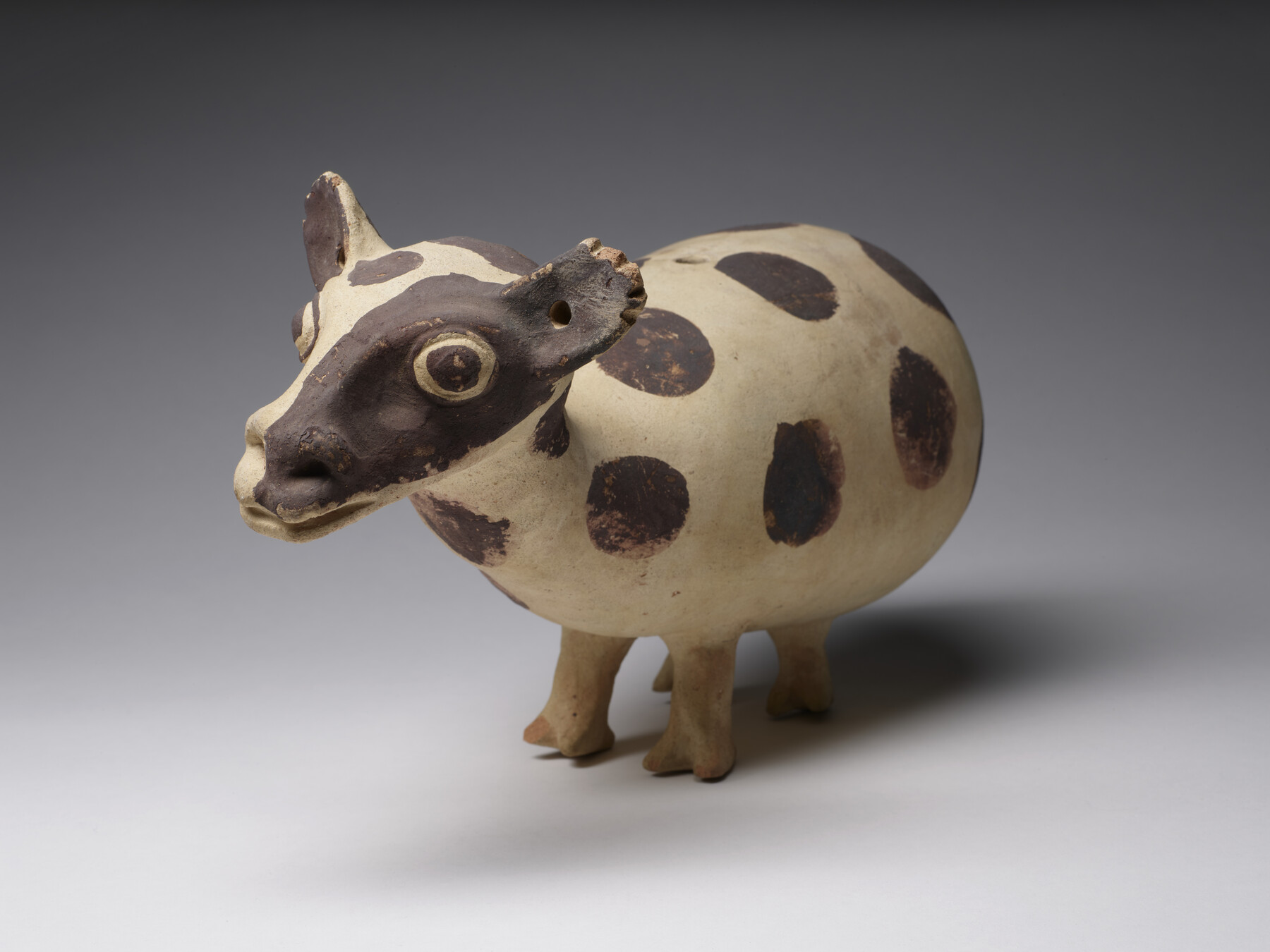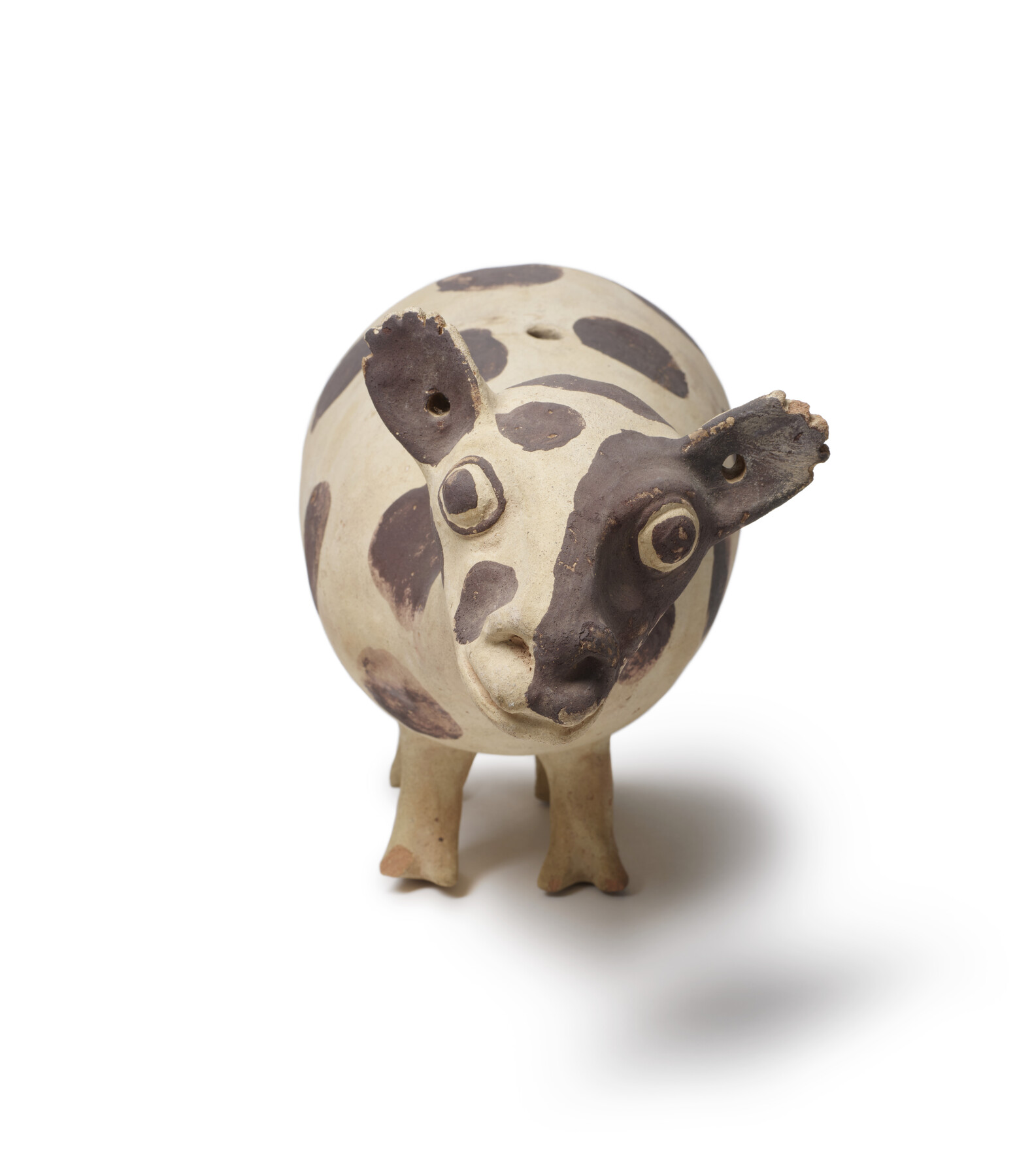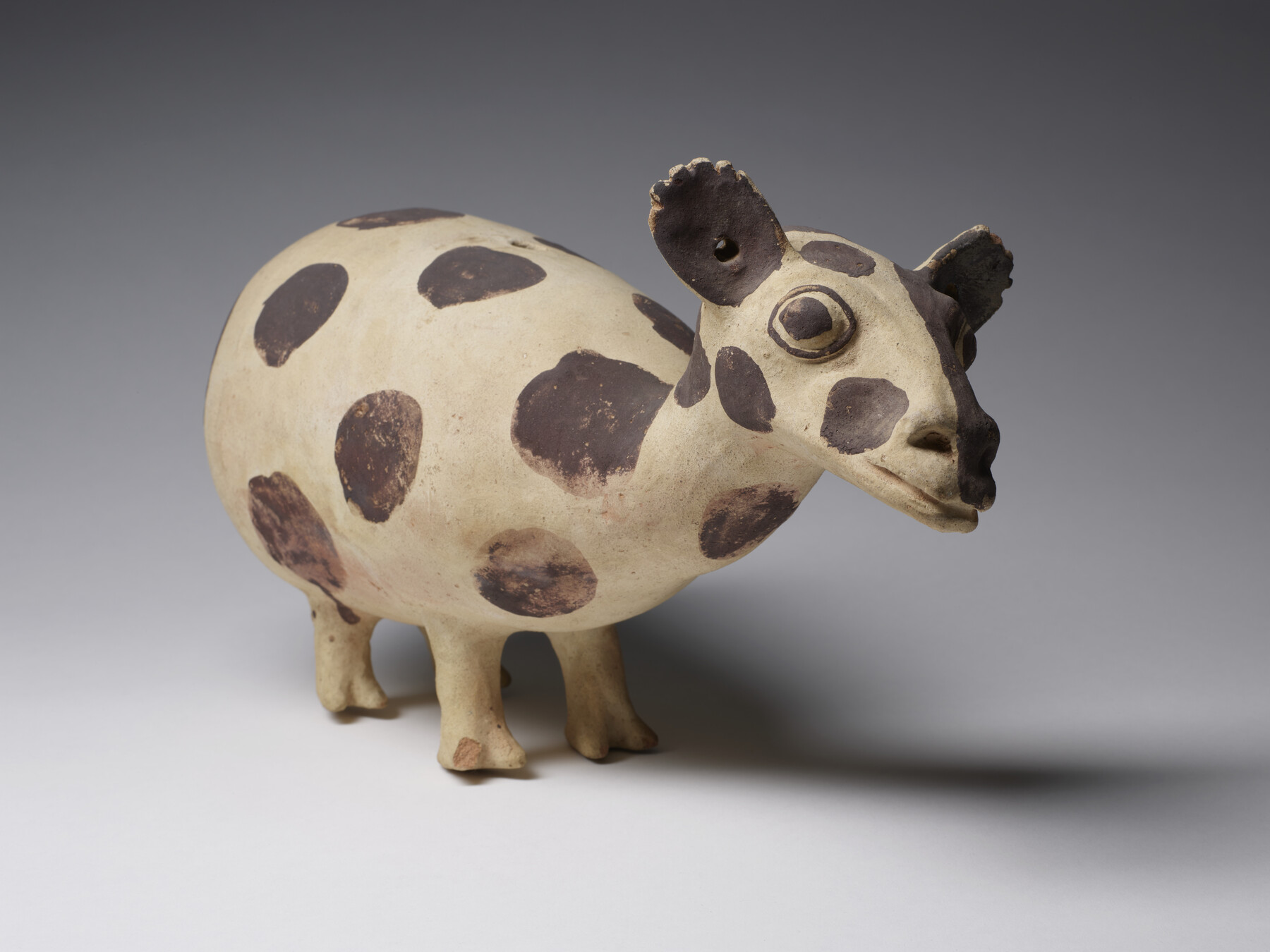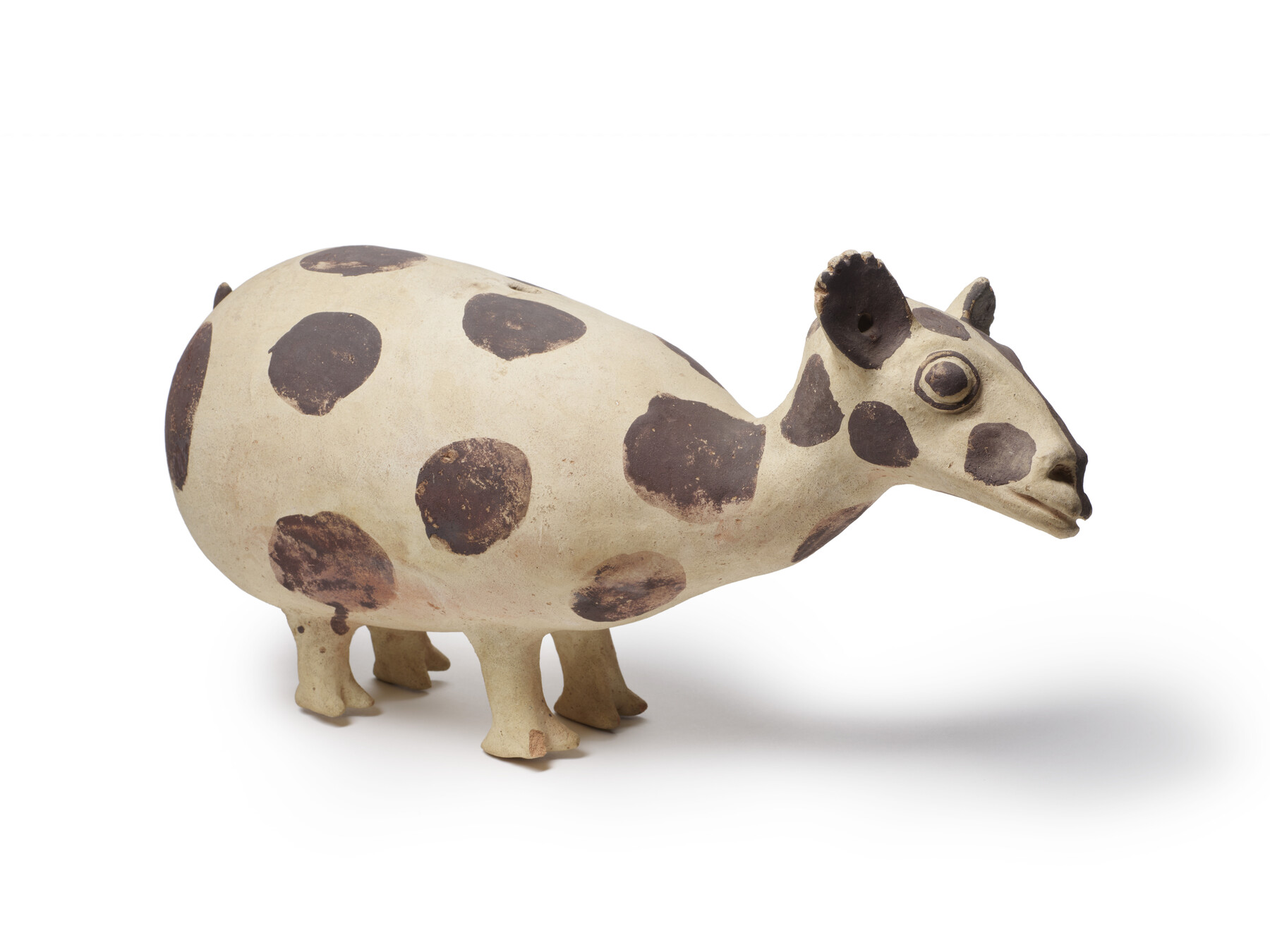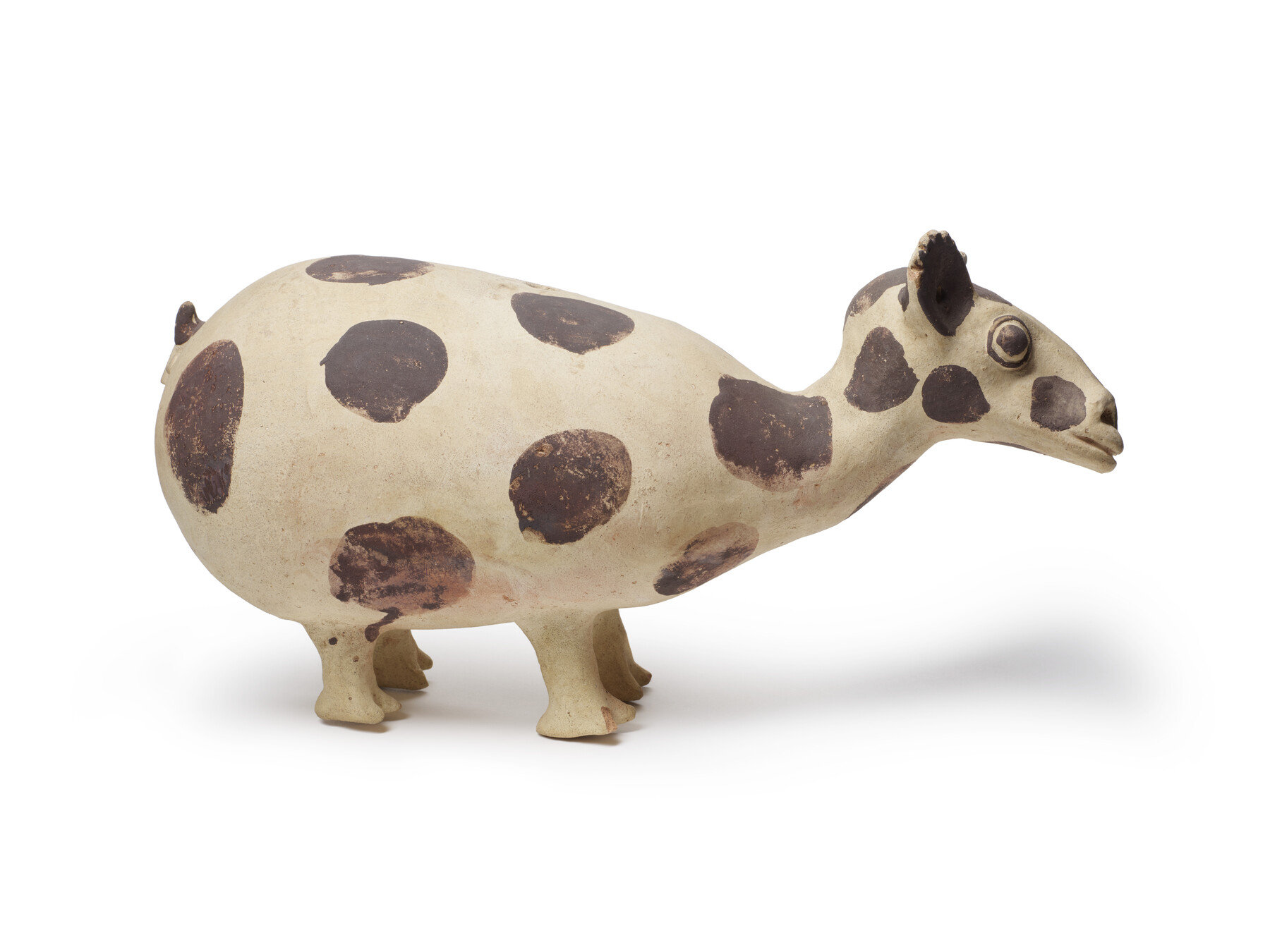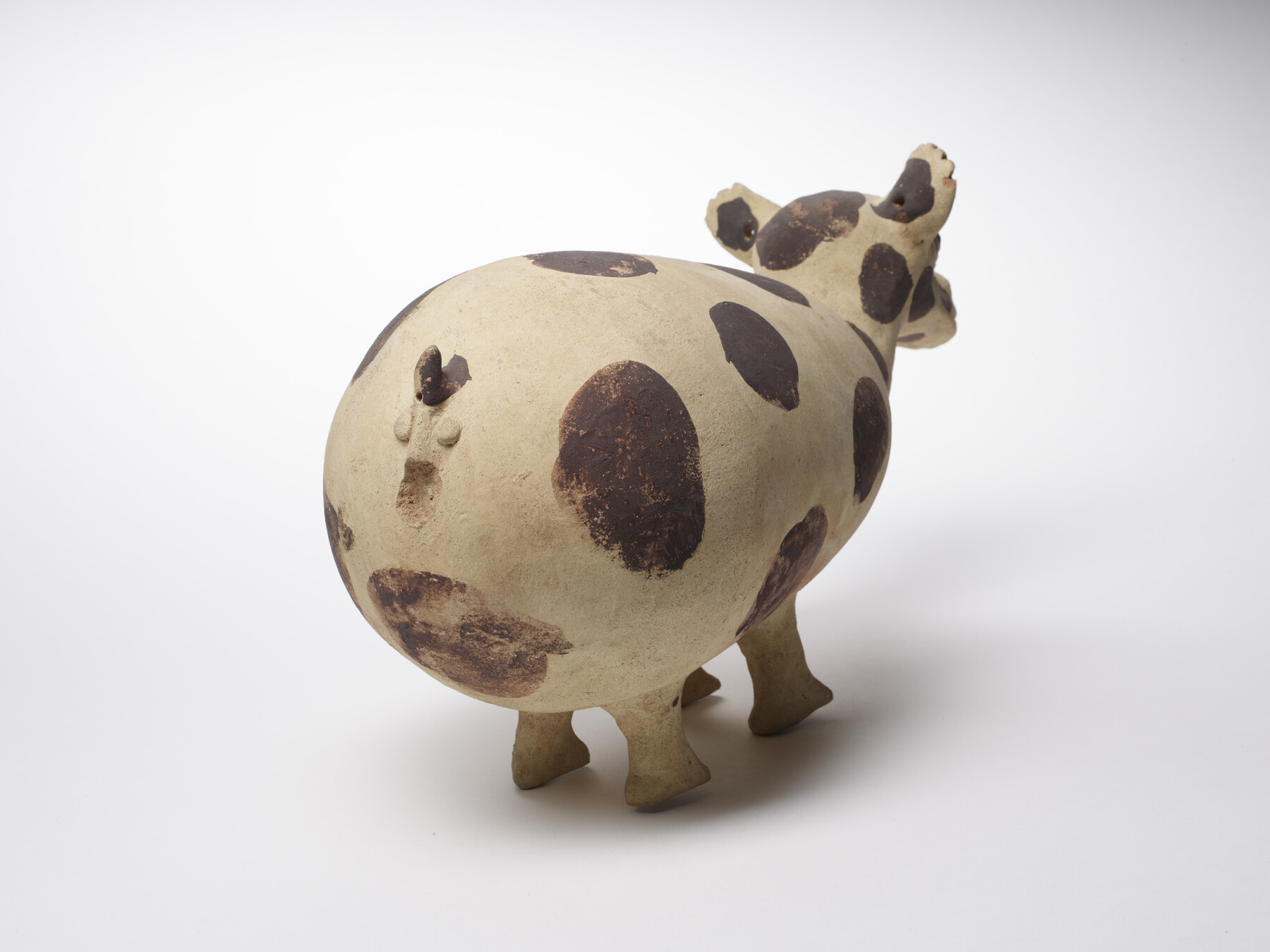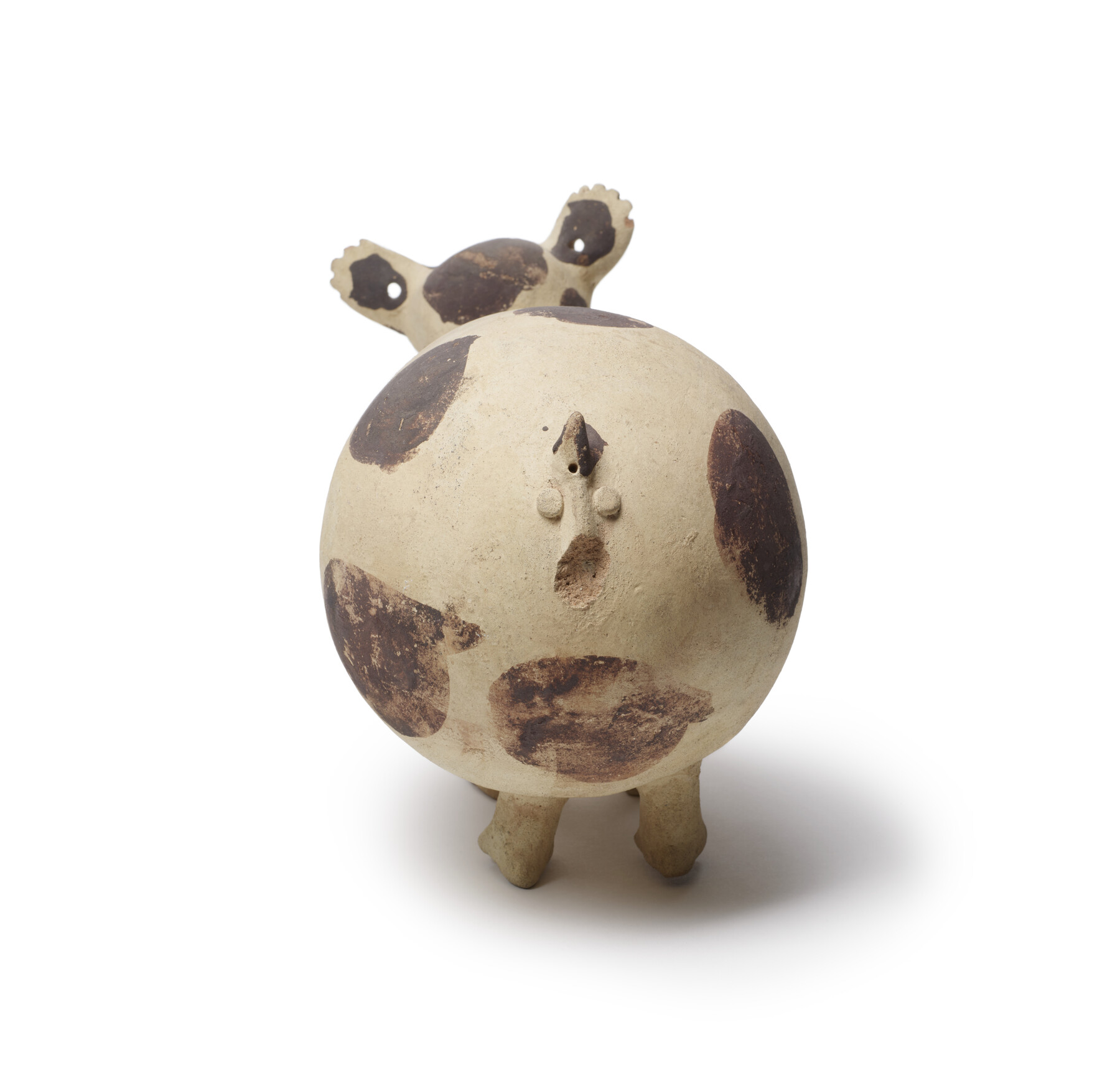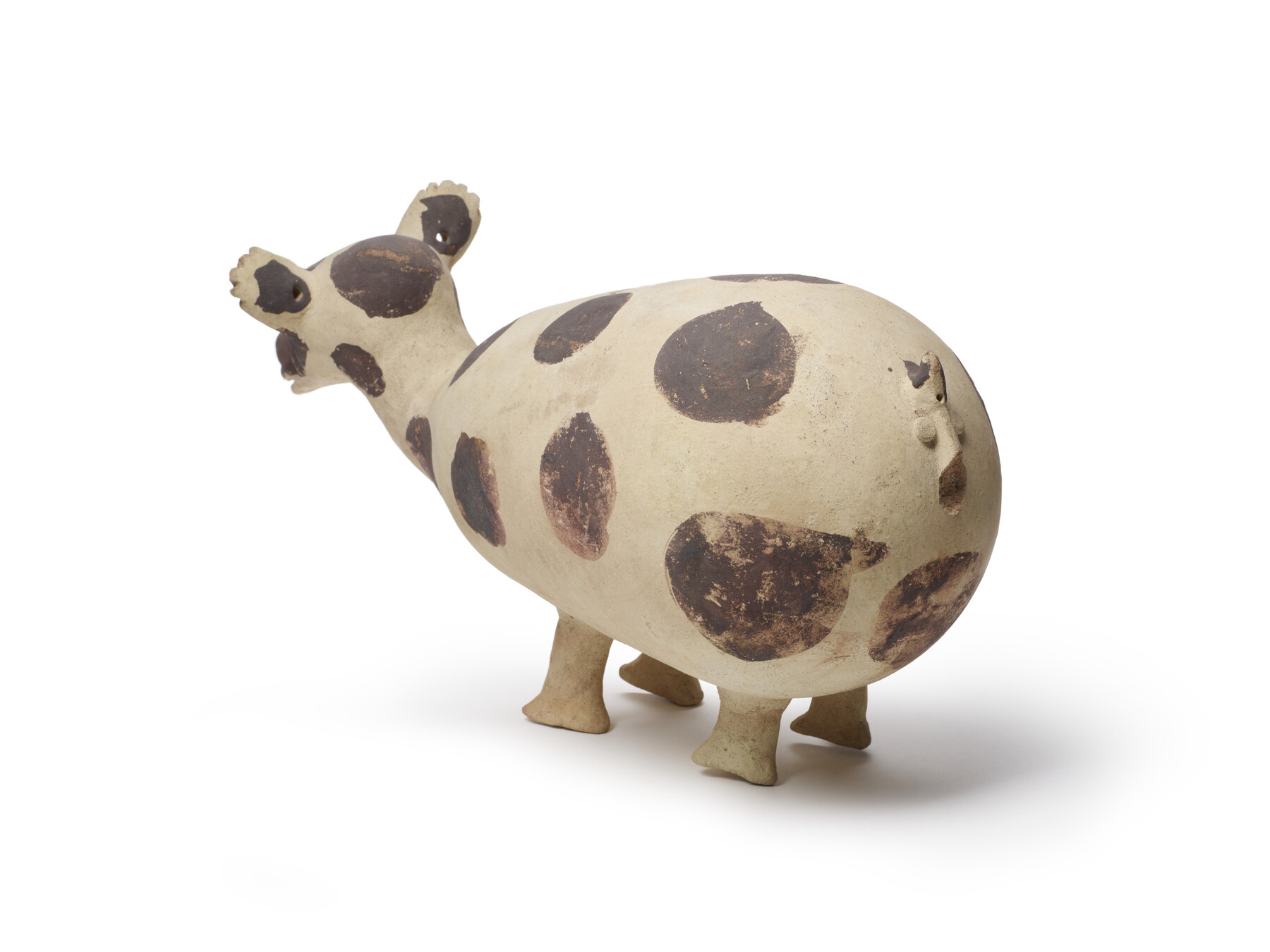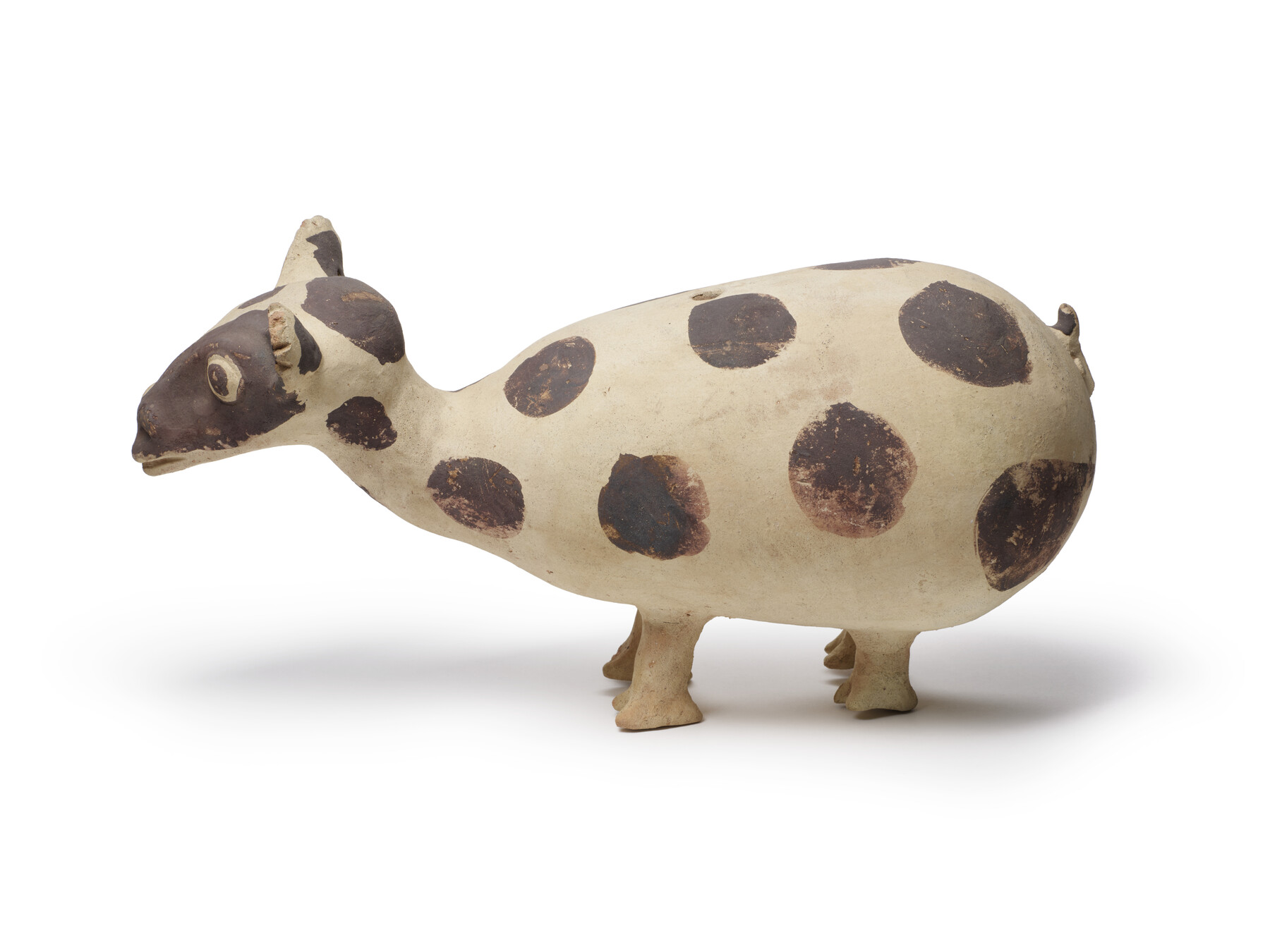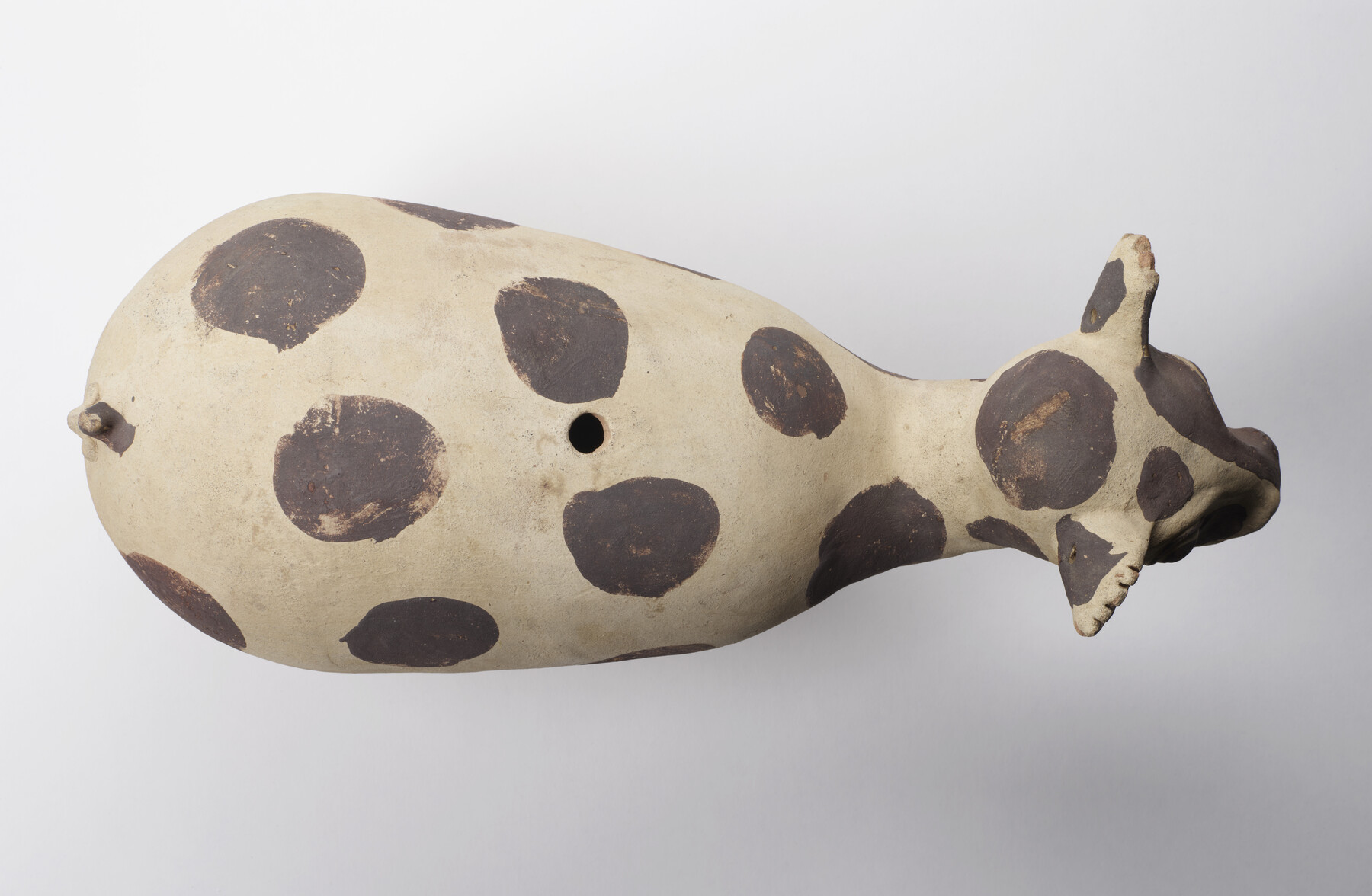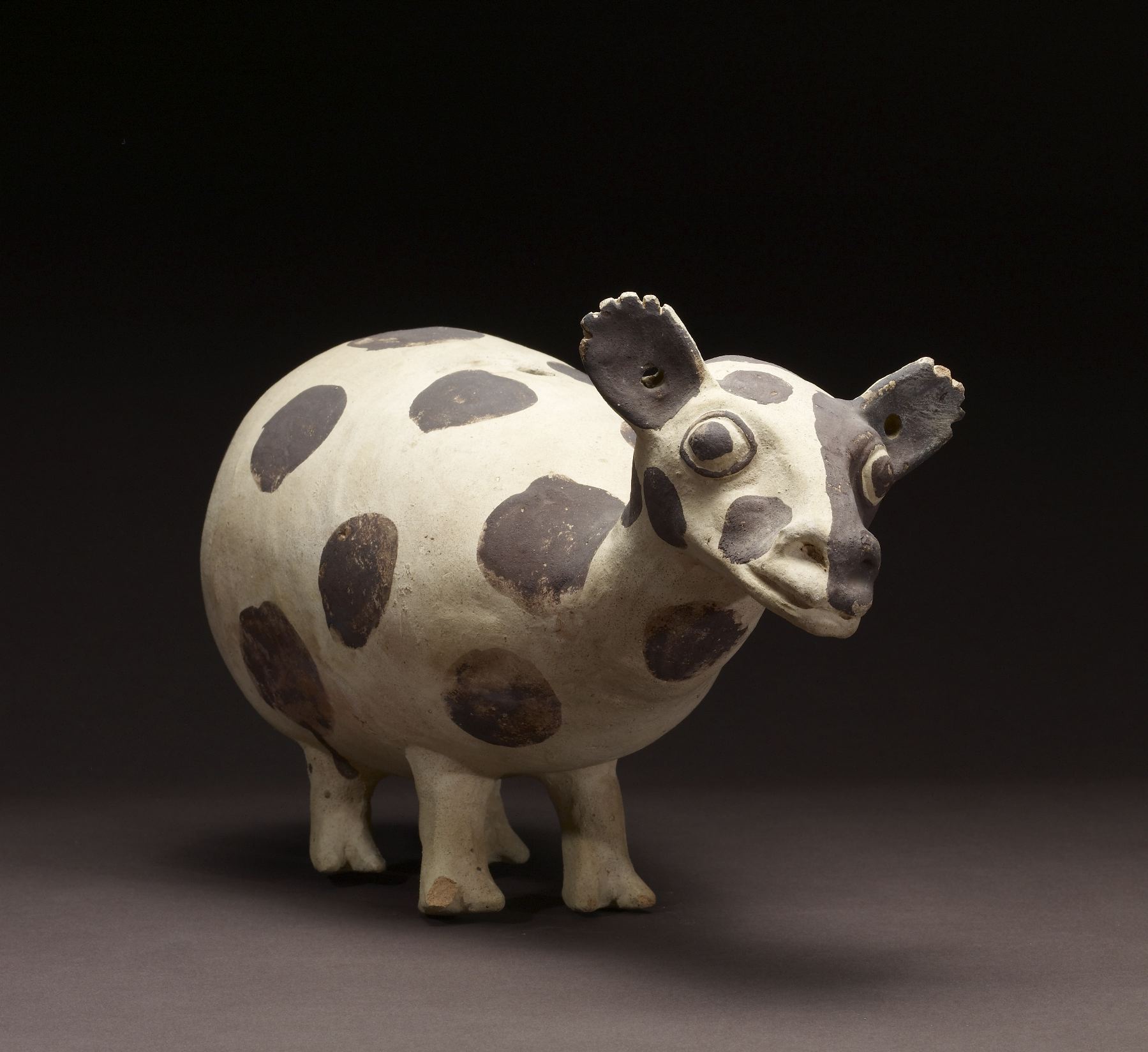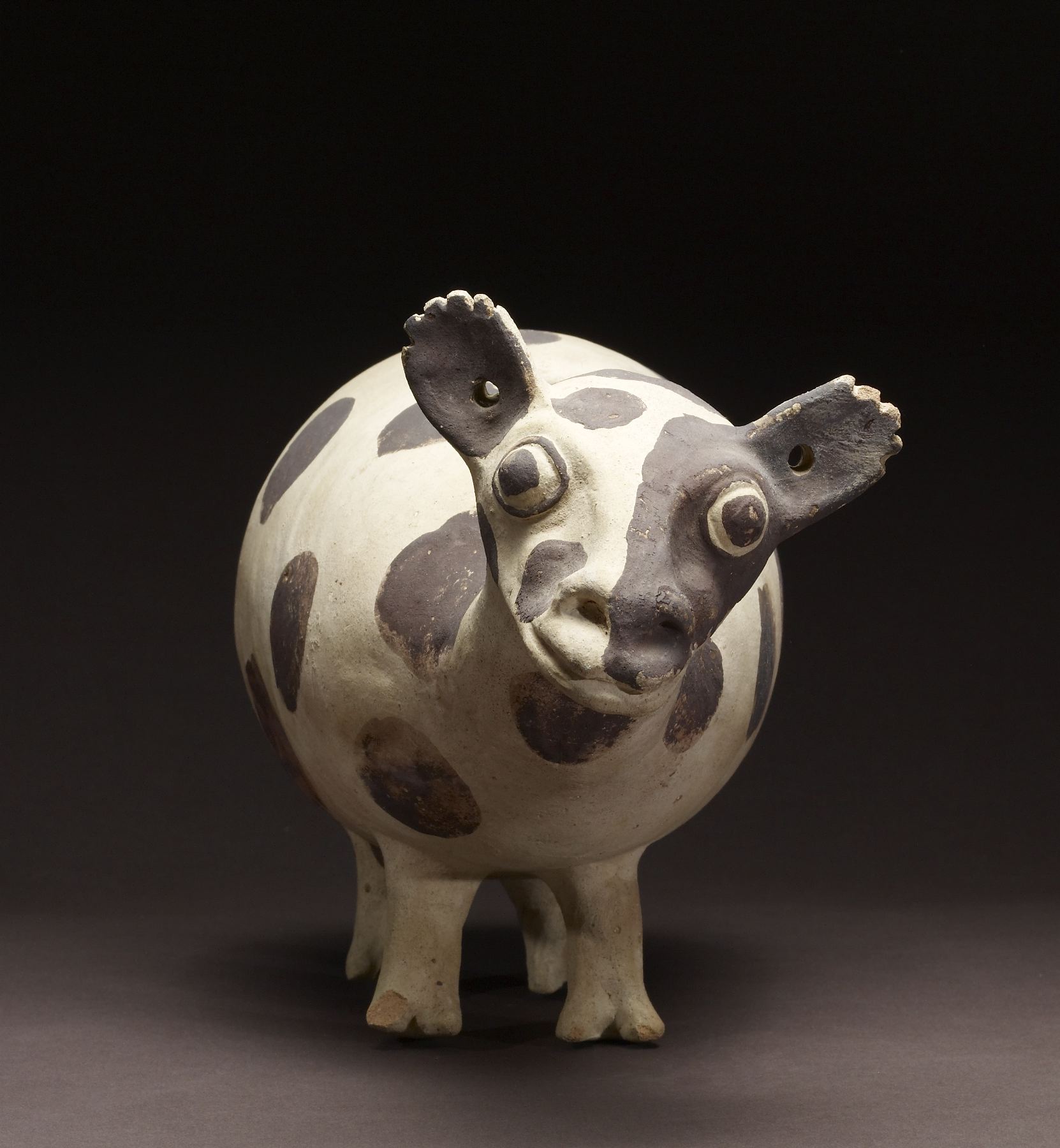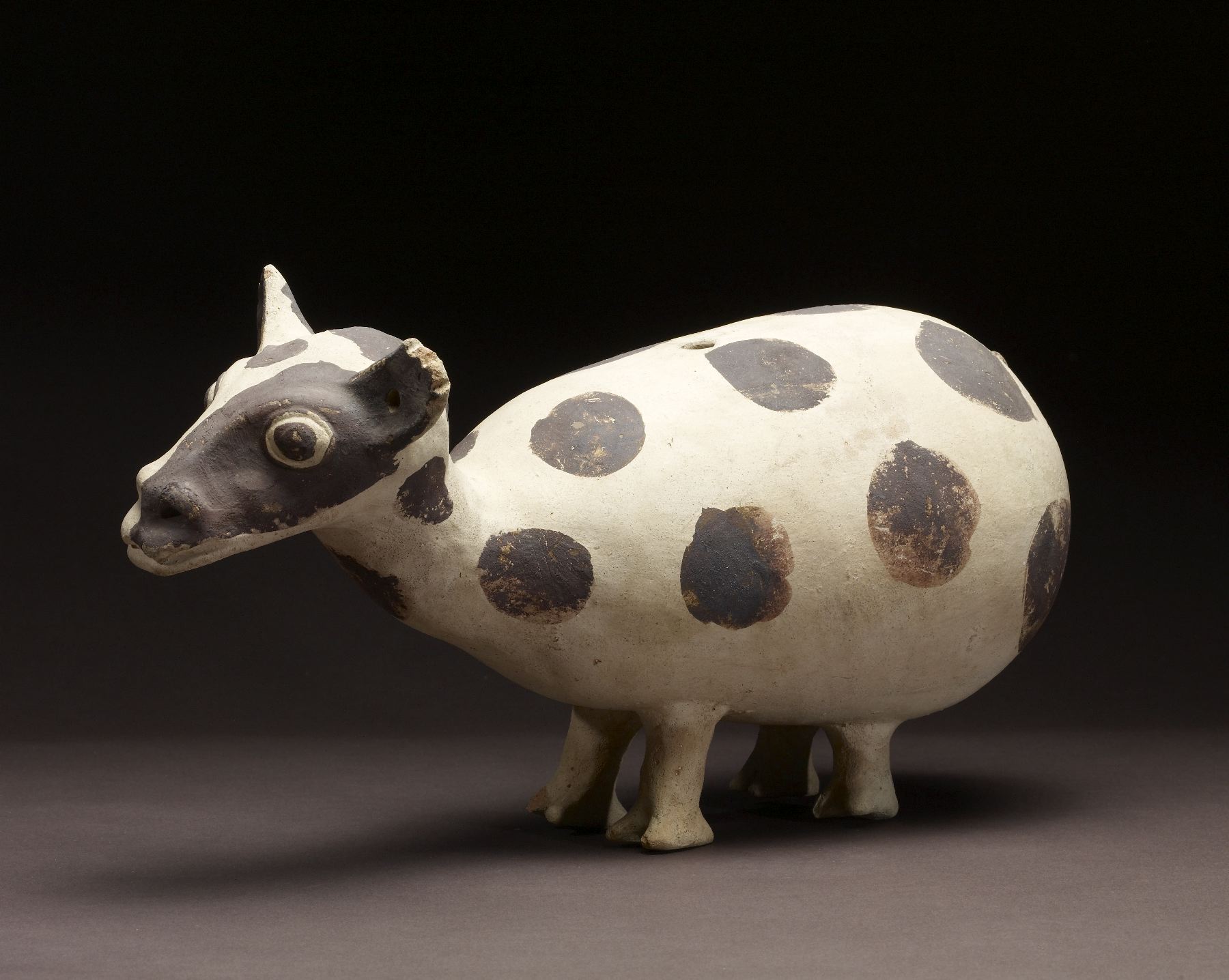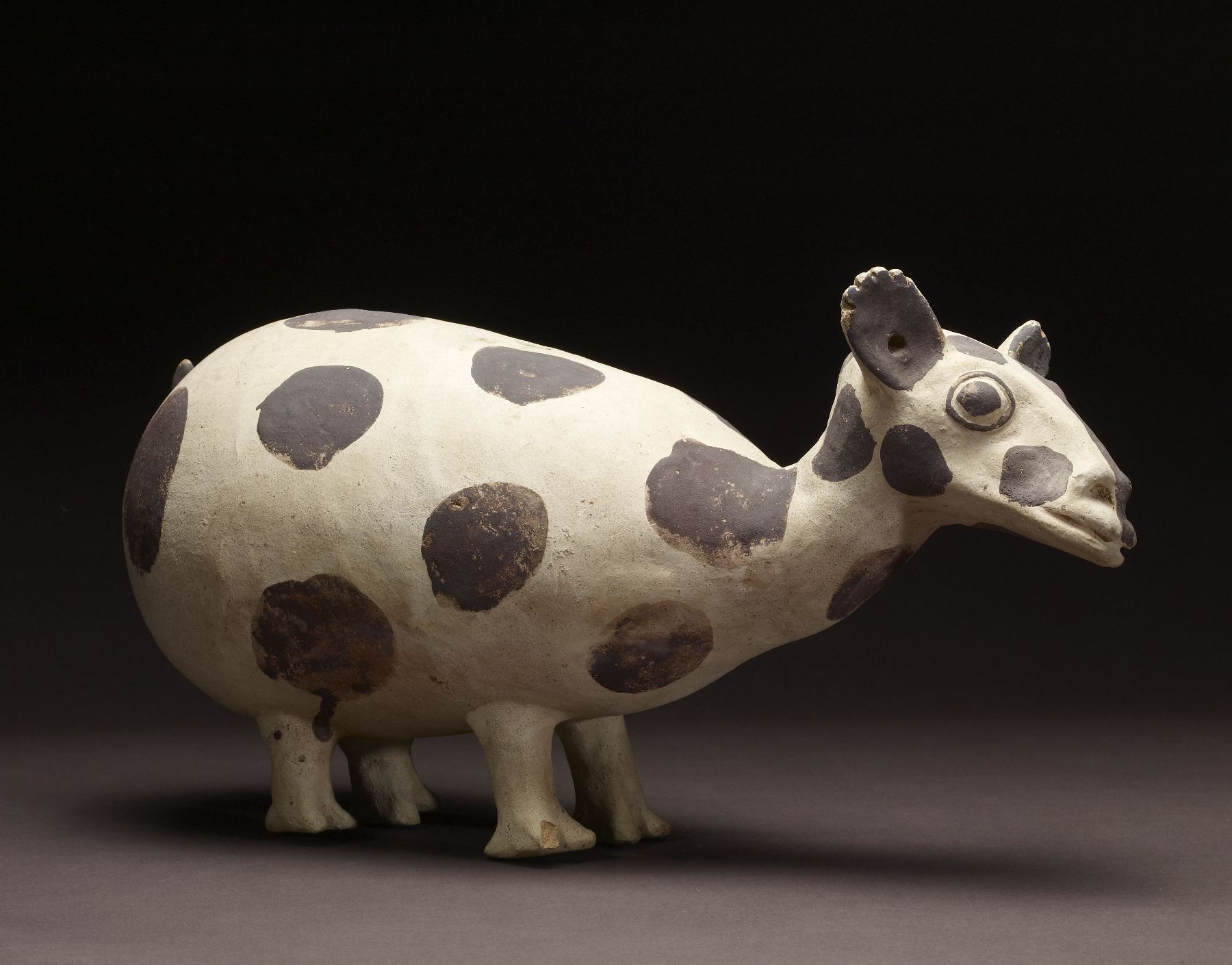Llama Effigy
(Ancient Americas )
The llama, a native camelid of the Americas, touched all aspects of Andean life. The llama- the only native American beast of burden-was used primarily to transport goods from the coastal deserts to the highest mountain plains. Well adapted to the extremes of the Andean environment, including climate, terrain, and altitude, the llama was at the heart of every Andean home. The llama and its camelid cousins (alpaca, guanaco, and vicuña) provided the all-important hairs that were spun into fibers to weave warm garments of considerable strength and durability. Such clothing was crucial for survival during cold Andean nights and in the altiplano highlands. Llamas also provided body heat for shepherds and other laborers who could not return to a warm home every night. Llama blood was an important ritual offering, and its meat was occasionally consumed for protein, although the high value of the living animal made these latter uses infrequent and of special significance. During the Late Intermediate Period, the Chancay Valley and adjacent Chillón Drainage developed an energetic corporate style of architecture and art. Large amounts of ceramics were produced and distributed among the ruling elite as well as those of lesser status. Among these are the distinctive mold-made and hand-modeled sculptures of humans (both men and women) and animals. This engaging sculpture of a young llama captures the animal's natural inquisitiveness. It cocks its head slightly to the side as if watching intently some unseen activity. The artist divided the llama's face into two halves, painting one side white and the other black, following the Andean principle of duality and balance. The artist also designated the animal's sex as male, and embellished the body with black spots, one of the natural coloration schemes of the animal. Typical of the distinctive Chancay pottery style is the somewhat haphazard modeling and painting, which enhance the piece's charm.
Provenance
Provenance (from the French provenir, 'to come from/forth') is the chronology of the ownership, custody, or location of a historical object. Learn more about provenance at the Walters.
Economos Works of Art [date and mode of acquisition unknown]; John G. Bourne, 1990s, by purchase; Walters Art Museum, 2009, by gift.
Exhibitions
| 2012-2013 | Exploring Art of the Ancient Americas: The John Bourne Collection Gift. The Walters Art Museum, Baltimore; Frist Center for the Visual Arts, Nashville. |
| 1998-2008 | Art of Ancient America, 1500 B.C.-1400 A.D.. Museum of New Mexico, Santa Fe. |
Geographies
Peru, Central Coast (Place of Origin)
Measurements
H: 8 5/16 x W: 15 7/8 x D: 6 5/16 in. (21.11 x 40.39 x 16 cm)
Credit Line
Gift of John Bourne, 2009
Location in Museum
Charles Street: Second Floor: Latin American Art / Arte Latinoamericano
Accession Number
In libraries, galleries, museums, and archives, an accession number is a unique identifier assigned to each object in the collection.
In libraries, galleries, museums, and archives, an accession number is a unique identifier assigned to each object in the collection.
2009.20.49


